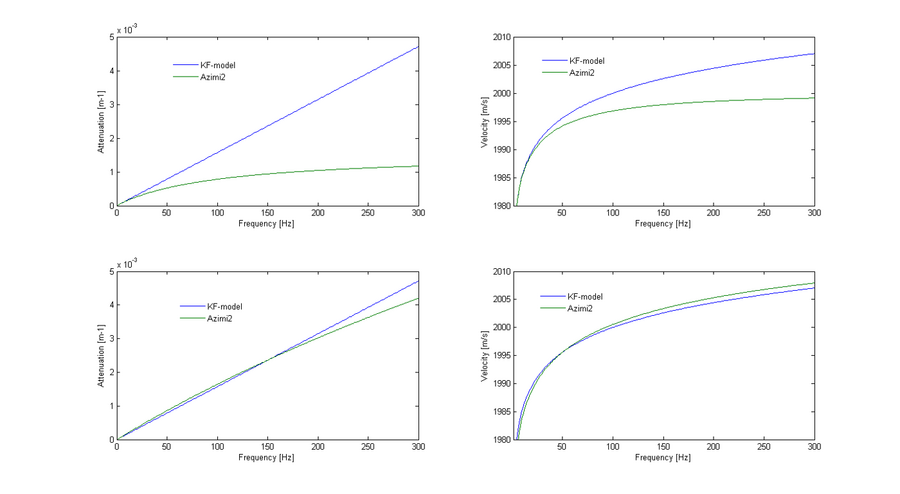Earth:Azimi Q models
}}
The Azimi Q models used Mathematical Q models to explain how the earth responds to seismic waves. Because these models satisfies the Krämers-Krönig relations they should be preferable to the Kolsky model in seismic inverse Q filtering.
Azimi's first model
Azimi's first model [1] (1968), which he proposed together with [2] Strick (1967) has the attenuation proportional to |w|1−γ and is:
- [math]\displaystyle{ \alpha (w)=a_1|w|^{1-\gamma} \quad (1.1) }[/math]
The phase velocity is written:
- [math]\displaystyle{ \frac {1}{c(w)} = \frac {1}{c_\infty} +a_1|w|^{-\gamma} +cot(\frac{\pi \gamma}{2}) \quad (1.2) }[/math]
Azimi's second model
Azimi's second model is defined by:
- [math]\displaystyle{ \alpha (w)= \frac {a_2|w|}{1+a_3 |w|} \quad (2.1) }[/math]
where a2 and a3 are constants. Now we can use the Krämers-Krönig dispersion relation and get a phase velocity:
- [math]\displaystyle{ \frac {1}{c(w)} = \frac {1}{c_\infty} -\frac{2a_2ln(a_3w)}{\pi (1-a_3^2w^2)} \quad (1.2) }[/math]
Computations
Studying the attenuation coefficient and phase velocity, and compare them with Kolskys Q model we have plotted the result on fig.1. The data for the models are taken from Ursin and Toverud.[3]
Data for the Kolsky model (blue):
upper: cr=2000 m/s, Qr=100, wr=2π100
lower: cr=2000 m/s, Qr=100, wr=2π100
Data for Azimis first model (green):
upper: c∞=2000 m/s, a=2.5 x 10 −6, β=0.155
lower: c∞=2065 m/s, a=4.76 x 10 −6, β=0.1
Data for Azimis second model (green):
upper: c∞=2000 m/s, a=2.5 x 10 −6, a2=1.6 x 10 −3
lower: c∞=2018 m/s, a=2.86 x 10 −6, a2=1.51 x 10 −4
Notes
- ↑ Azimi S.A.Kalinin A.V. Kalinin V.V and Pivovarov B.L.1968. Impulse and transient characteristics of media with linear and quadratic absorption laws. Izvestiya - Physics of the Solid Earth 2. p.88-93
- ↑ Strick: The determination of Q, dynamic viscosity and transient creep curves from wave propagation measurements. Geophysical Journal of the Royal Astronomical Society 13, p.197-218
- ↑ Ursin B. and Toverud T. 2002 Comparison of seismic dispersion and attenuation models. Studia Geophysica et Geodaetica 46, 293-320.
References
- Wang, Yanghua (2008). Seismic inverse Q filtering. Blackwell Pub.. ISBN 978-1-4051-8540-0. https://books.google.com/books?id=IpwAjT-F_TgC.
 |



